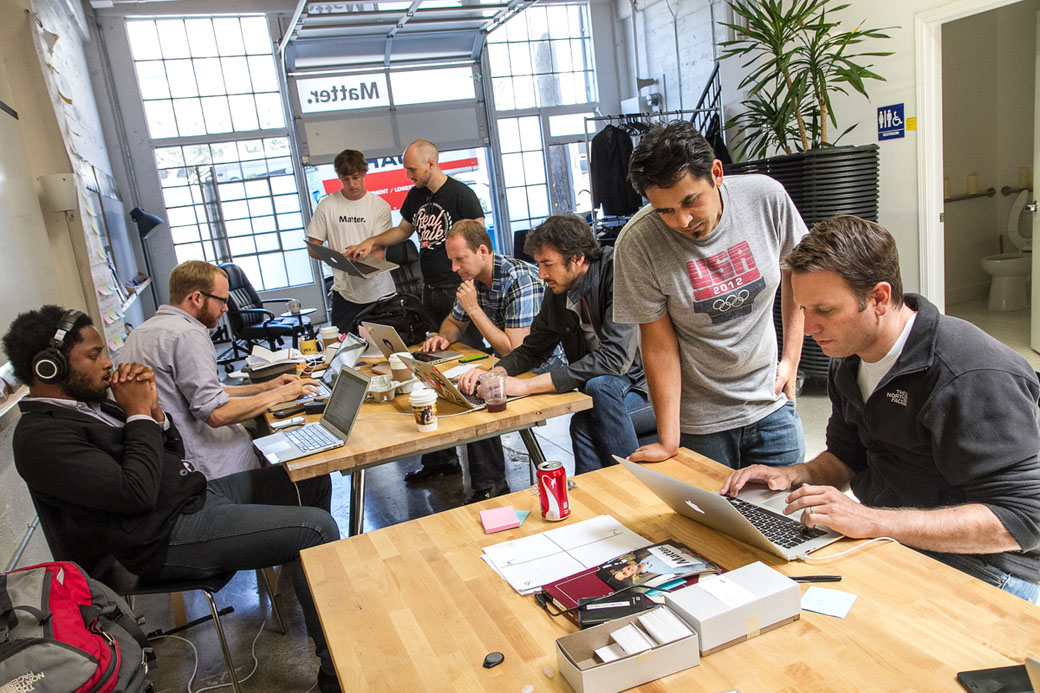
Lessons that Matter: Six takeaways from the media accelerator’s first class of startups
Photo credit: Preston Merchant for Matter.
The San Francisco-based media startup accelerator Matter Ventures plans to announce its second class next week. That makes it a perfect time to look back on the lessons learned from the first group of startups, Matter One, which graduated from the program this summer.
Matter CEO Corey Ford is a proponent of human-centered design, and his approach to Matter One was no different. Six promising companies made it through a five-month process of intensive coaching; venture capitalist-led “design review” critiques; and two final Demo Day showcases in front of potential investors in San Francisco and New York City. The program gave them a chance to prototype their projects and help test them before a large audience.
This has been a new experiment in funding for both Knight Foundation and its partners, the Public Radio Exchange and KQED, the PBS affiliate serving Northern California. I tagged along to help capture valuable lessons that may inform future programs. I checked in regularly with Ford to help him assess what was and wasn’t working. When it was over, I compiled my findings into a report that will be useful in refining the program. Here are my six key takeaways.
1. Most teams don’t actually have a product yet.
This is the crux of the lean startup philosophy. Teams enter Matter thinking they know exactly what they are building or want their business to be. Since their idea got them into Matter, they must already be there, right? Wrong. Many teams have good ideas but haven’t hit on a big enough consumer pain point yet. What’s the customer problem or need that they are addressing? The role of the accelerator is to help them get there and answer that question. They aren’t told what to do, but Matter coaches them along. That can take time—even months—but from what I could see, this was one of the most transformative and beneficial parts of the accelerator.
2. Human bugs can be the hardest to fix.
Bugs aren’t just in code; they’re in people too. Human dynamics are a major reason why many startups fail, and mentors need to invest a lot of time in helping groups learn how to work together. This is a personal growth issue. Startups are a roller coaster, and those that succeed must learn to treat their team like a constantly evolving prototype. This means reaching an understanding that team dynamics will always shift, and the best way to improve them is to experiment with different approaches. Being a leader of a team is even harder; it involves balancing the needs of the group with business demands and making tough decisions. For some startups, personal coaching on how to effectively lead, including providing guidance through difficult decision points, was essential.
3. 1+1+1+1+1+1= > 6
Many startups spend a lot of time trying to solve problems in a small group. This can be like working in an echo chamber. The advantage of the cohort model, where teams share space over a fairly extended period of time, is that it brings a bigger team on board—in this case five other startups. To some extent it’s up to teams to leverage this resource. But if there is a specific problem a team is trying to solve, who better to brainstorm with than a roomful of media and technology experts who would love a quick break from their own problems.
4. Does that cap table look right to you?
Without realizing it, teams enter an accelerator with their business side in a less-than-ideal position. A good accelerator will invest energy in helping those teams reach an investable position. In fact, the sustainability of the accelerator relies on it; it’s pure symbiosis. This can mean acting as a mediator in negotiations with current and former team members and investors, and possibly putting legal resources behind restructuring. The process is a lot easier if teams are upfront about their equity structure and obligations from the outset. The sooner teams are in an investable position, the sooner they can raise capital.
5. Finding the right story
Media is about storytelling. And so, it turns out, is fundraising. Most teams have a compelling story to tell, and Matter was able to help draw that out. It can be tough to raise money from venture capitalists for media ventures, but there is no doubt that major transformation has come from media startups. Pandora. Netflix. Twitter. The next disruptive content startup might come out of Matter. But it needs to find and tell its story in the right way to attract investment.
6. Accelerators rock!
At least this one did. So far, Matter has been a success. That’s according to the teams. At the end of the program I spoke with every one of them. The last question in my notes was always the same: Would you do it all over again, if you had the chance? I never needed to ask. Every team told me time and again how valuable the accelerator had been to them. As an outsider, I was able to see that transformation first hand. The final Demo Day presentations were fantastic; that represented a complete turnaround from where the teams were at the beginning.
With each class, more lessons will become apparent, and new startups will benefit from the experiences of the old. Only time will tell if the effort is successful, but from where I stand, it already has been.
Hannah Eaves, consultant at Knight Foundation
Recent Content
-
Journalismarticle ·
-
Journalismarticle ·
-
Journalismarticle ·


